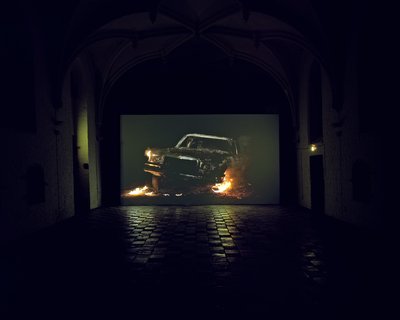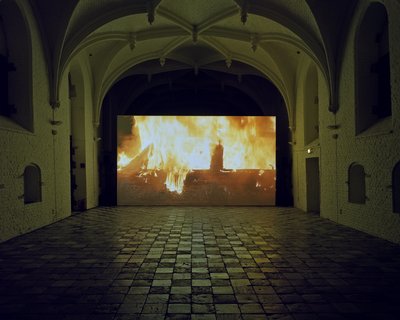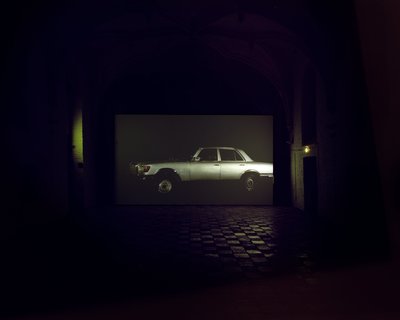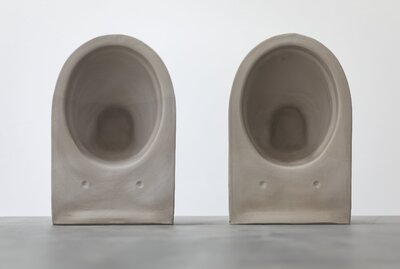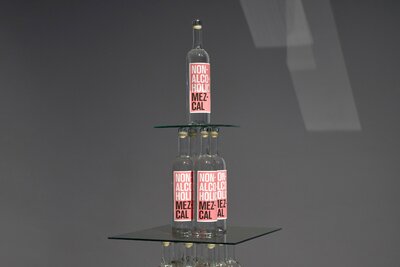Burning Car
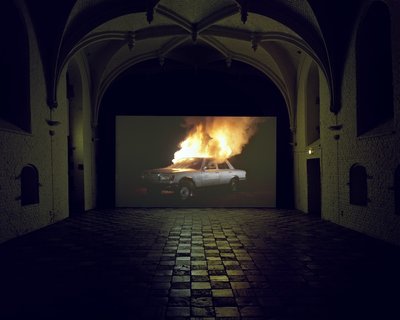
Burning Car is an 11-minute filmwork that documents a car on fire, burning in real time. The camera pans around the car, capturing the vehicle’s obliteration in a manner worthy of a television commercial. As it burns, the cabin fills with smoke and fire, the paint begins to bubble, and the tires explode. By the end, the car is burned completely and only its charred frame remains.
As the car is burned, the dream-images it embodies are also destroyed in the process: the American dream, financial stability, mobility, the West, escape – all smolder and are incinerated. But burning is not a solely destructive process; it can also be generative. When something is burned, energy is ignited and can spread rapidly. For instance, the verb “brand” means searing a symbol onto something to signify ownership (the Danish word for fire is in fact “brand”). A brand, such as a copyrighted brand, is also something that can catch on and circulate swiftly.
In the past decade, the image of a burning car has become a symbol of political revolt and resistance. Car burning became common practice at political uprisings, such as the Paris revolts in 2008. Like a hot trend, the act of car-burning-as-protest soon reached the neighbourhood of Nørrebro in Copenhagen, and the image of a burning car became a “logo” of protest. However, the widely-publicized image of the burning car was granted more exposure than the individuals burning the car or their political demands. The original sign of the burning car self-combusts, thus producing new symbols.
Produced by Propeller Group (Ho Chi Minh City) and co-produced by the Vleeshal, Middelburg, Netherlands.
